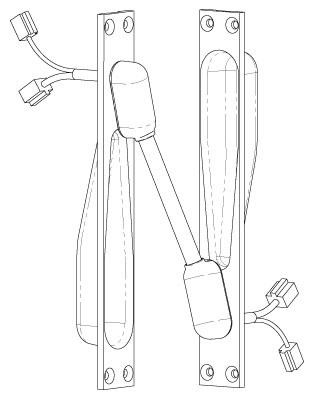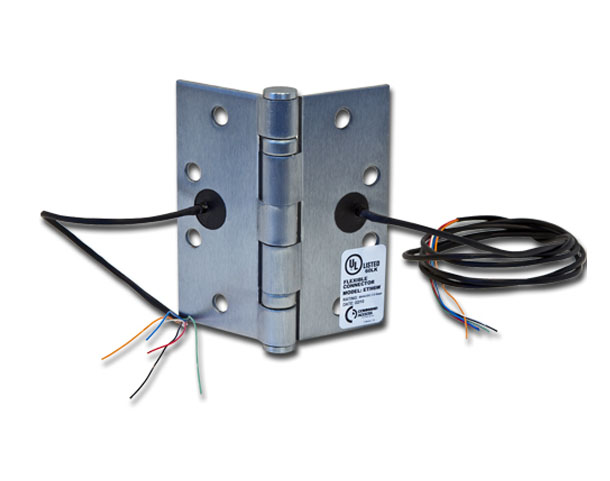
The choice between an electric through-wire hinge and an electric power transfer (EPT) is one of convenience vs. durability. Whereas the hinge requires almost no prep, the EPT does. However, the EPT is designed to minimize stress on the wires and the electrified through-wire hinge is not.
Every time the door is opened, the wire in the electric hinge is unbent and bent at least ninety degrees. With an EPT, the wire is bent at a much gentler angle. This difference translates into a big difference in durability in high traffic applications.

SDC electric through-wire hinges are UL Listed for 100,000 cycles. That means if the door were used 200 times a day for 500 days, one might expect the wires to break sometime after day 501 or so – or a life span of about a year and a half in this unusually high usage environment. Electric through-wire hinges, therefore, may not be the best choice for doors that experience very high traffic volume. The Assa Abloy EPT is rated at three million cycles, or fifteen times that of the hinge – that is, in the 200 cycles per day scenario, about twenty-two years vs. a year and a half.
This difference in durability is illustrated by the evolution of continuous hinges with through-wire electrification. Because the wires eventually break, hinge manufacturers now offer removable panels that contain the wire, so that when the wire breaks the entire 7-foot hinge need not be replaced; just the panel. While it is fairly cheap and easy to replace a 4-1/2 x 4-1/2 electric hinge, replacing a full height electrified continuous hinge is not. Replacing the removable panel is not the easiest process either, but it is much less expensive than replacing the whole hinge.
With continuous hinges as well as regular hinges, the EPT remains the far more durable choice. All continuous hinge manufacturers offer their hinges prepped for EPT; most require handing and location of prep when ordering. The projected life span of an EPT in a continuous hinge is in numbers of decades. But if you ever do have to replace one, it’s relatively easy.

{ Comments are closed! }